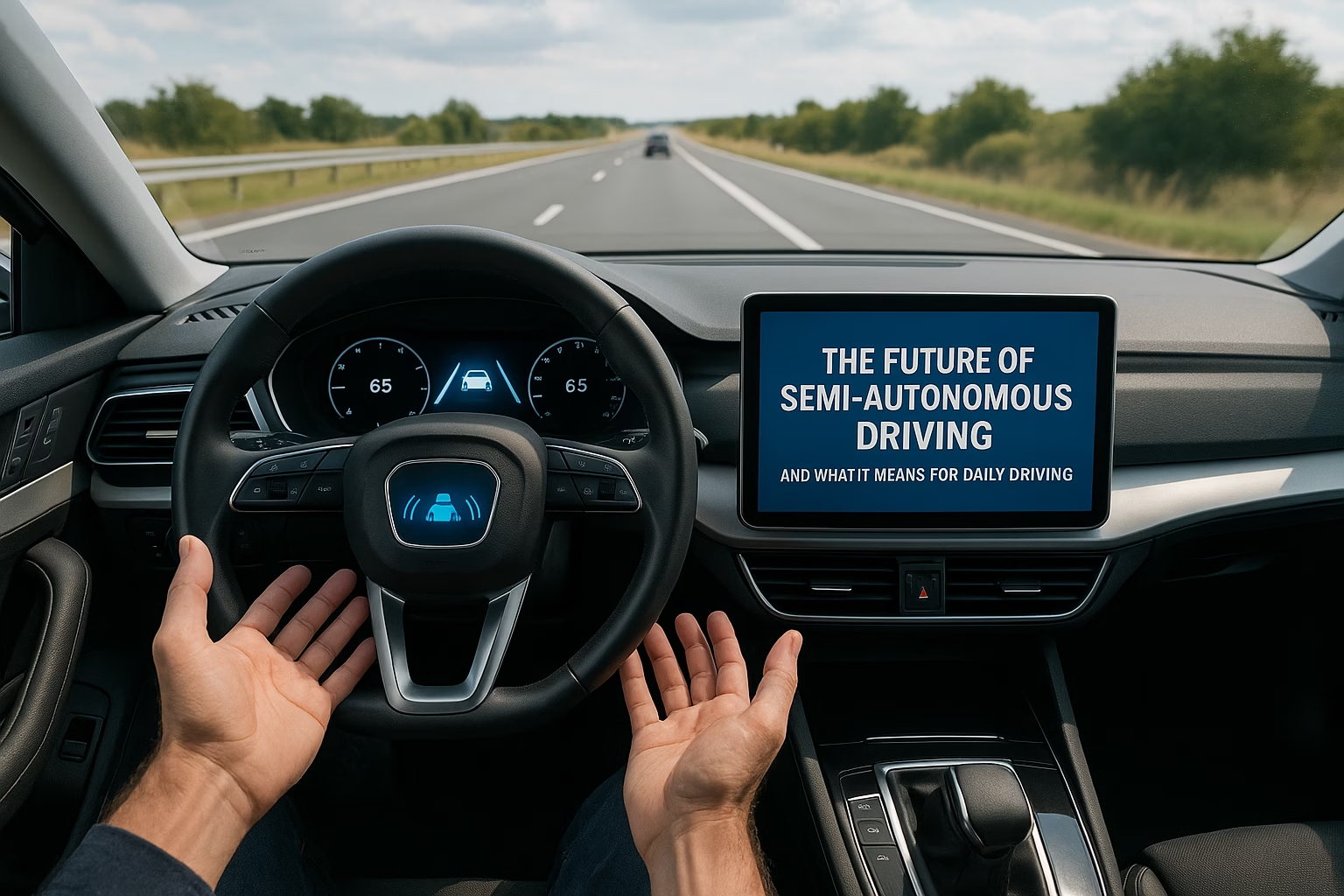As manufacturers roll out more driver-assistance features, many motorists are trying to understand what “semi‑autonomous” actually means. When you hear terms like Autopilot, Super Cruise or ProPILOT, you’re not looking at full self-driving. These are Level 2 systems on the SAE scale that can assist with steering, acceleration and braking under certain conditions. They are a step up from basic lane-keeping and adaptive cruise because they combine multiple functions, but they still require you to supervise the drive. In other words, they’re like very advanced cruise control rather than a robot chauffeur. Knowing this distinction will help you set the right expectations and avoid the dangerous assumption that your car can drive itself.
The building blocks of semi‑autonomous driving are already familiar to many motorists. Lane departure warning, lane centering, adaptive cruise control and traffic jam assist all use cameras, radar and sometimes LiDAR to read the road, maintain distance and keep your vehicle centred. When these functions are integrated, the system can handle long highway stretches and stop‑and‑go traffic with minimal input from you. Brands give them catchy names like Tesla’s Autopilot and Full Self‑Driving (which is still Level 2), GM’s Super Cruise, Ford’s BlueCruise, and Nissan’s ProPILOT Assist. Regardless of the branding, the core technology uses sensor fusion and software algorithms to keep you within your lane and safely away from other vehicles. The driver must still keep eyes on the road and hands on the wheel.
The future promises much more capability, but also more nuance. Automakers are working toward Level 3 systems that can take over the driving task under limited conditions and allow the driver to look away from the road. Mercedes‑Benz has already introduced Drive Pilot in Germany and some parts of the United States, letting drivers read emails or watch videos in low-speed highway traffic while the system handles the controls. Honda is rolling out similar technology in Japan. These advancements rely on high-definition mapping, redundant sensors, and strict geofenced conditions. Regulators require a clear handoff process, and drivers must be ready to retake control when the system requests. As features migrate from luxury vehicles to mainstream models, more people will experience hands‑off driving for short periods.
For everyday driving, semi‑autonomous systems can make long commutes less fatiguing and help you manage heavy traffic. Adaptive cruise can reduce the mental load of maintaining speed and distance, while lane centering can smooth out weaving on the motorway. Parking assistance can handle tricky manoeuvres. However, you still need to remain engaged. These systems are not perfect; they struggle with poorly marked roads, construction zones, extreme weather and unusual situations like emergency vehicles stopped on the shoulder. Keeping a light hand on the wheel and scanning the environment ensures you can intervene instantly if the car does something unexpected.
Another consideration is the legal and ethical landscape. Most countries place ultimate responsibility on the driver, regardless of the technology in the vehicle. If a collision occurs while a semi‑autonomous system is active, the driver may still be held liable. Insurance companies and regulators are examining how to apportion blame when software is involved, but for now it’s safest to assume you are in charge. Manufacturers also collect data about how and where you use these features, which could influence insurance premiums and privacy. Understanding the rules and risks around autonomy will become part of routine car ownership.
Looking ahead, semi‑autonomous capability is expected to expand beyond highways. City pilot features will navigate complex urban environments, using improved artificial intelligence and vehicle‑to‑infrastructure communication to anticipate lights, pedestrians and cyclists. Over‑the‑air updates will continuously refine the algorithms, much like smartphone apps. The cars of tomorrow may be able to drop you at your door and then park themselves in a remote garage. Yet even with these advancements, widespread Level 4 or Level 5 autonomy remains years away. The sheer variability of real‑world driving, unpredictable human behaviour and legal hurdles make full automation a long-term goal rather than an imminent reality.
For now, the best mindset is to treat semi‑autonomous features as helpers rather than replacements. Engage them when they add comfort or safety, but keep your senses tuned to the driving environment. Take time to learn how your particular system behaves, including its limitations, alerts and disengagement methods. Encourage family and friends who share your car to understand these tools too. As technology evolves, driver education will be just as important as software updates. With the right approach, semi‑autonomous driving can make daily journeys more relaxed and safer without surrendering the joy and responsibility of driving.
It’s also worth noting that semi‑autonomous features may change the way you plan trips. Systems often operate only on mapped highways or under certain speed thresholds, so you’ll need to know when they are available. Updating your car’s software and maps, keeping sensors clean and ensuring that the cameras aren’t obstructed by aftermarket accessories will help maintain performance. As the technology becomes more common, expect to see new dashboard indicators, driver monitoring systems that track eye movement, and even subscription models for advanced features. All of these elements point toward a gradual, collaborative evolution of driving where humans and computers work together rather than compete.

Hiran Alwis is an automotive lecturer and ADAS specialist with over 15 years of experience in diagnostics, advanced safety systems, and technical training. He founded ADAS Project to help everyday drivers and workshop technicians understand and safely use advanced driver assistance systems.
